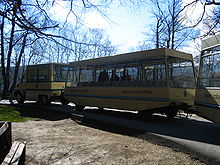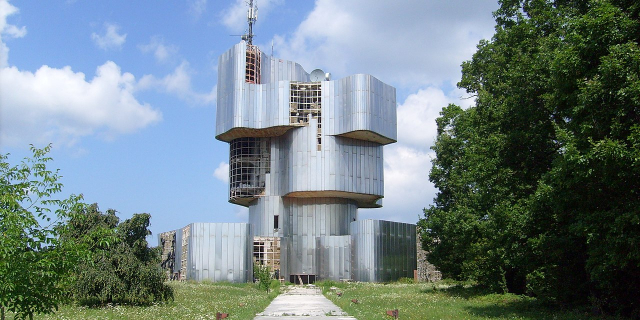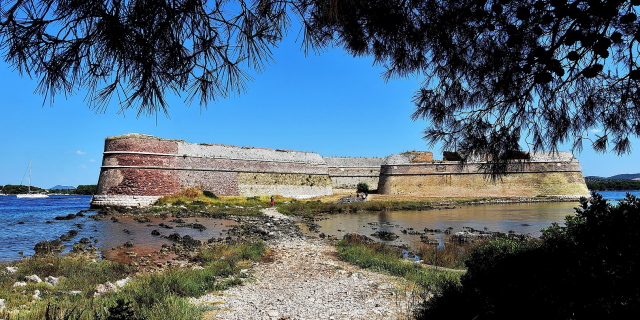Plitvice Lakes National Park (Croatian: Nacionalni park Plitvička jezera, colloquially Plitvice, pronounced [plîtʋitse]) is one of the oldest and largest national parks in Croatia. In 1979, Plitvice Lakes National Park was inscribed on the UNESCO World Heritage list, due to its outstanding and picturesque series of tufa lakes, caves, connected by waterfalls.
The national park was founded in 1949 and is in the mountainous karst area of central Croatia, at the border to Bosnia and Herzegovina. The important north–south road that passes through the national park area connects the Croatian inland with the Adriatic coastal region.
The protected area extends over 296.85 square kilometres (73,350 acres). About 90% of this area is part of Lika-Senj County, while the remaining 10% is part of Karlovac County.
Each year, more than 1 million visitors are recorded, making the national park the most...Read more
Plitvice Lakes National Park (Croatian: Nacionalni park Plitvička jezera, colloquially Plitvice, pronounced [plîtʋitse]) is one of the oldest and largest national parks in Croatia. In 1979, Plitvice Lakes National Park was inscribed on the UNESCO World Heritage list, due to its outstanding and picturesque series of tufa lakes, caves, connected by waterfalls.
The national park was founded in 1949 and is in the mountainous karst area of central Croatia, at the border to Bosnia and Herzegovina. The important north–south road that passes through the national park area connects the Croatian inland with the Adriatic coastal region.
The protected area extends over 296.85 square kilometres (73,350 acres). About 90% of this area is part of Lika-Senj County, while the remaining 10% is part of Karlovac County.
Each year, more than 1 million visitors are recorded, making the national park the most popular tourist attraction in Croatia. Entrance is subject to variable charges, up to 300 kuna or around €39 per adult per day in summer 2022.
While other nature protection areas are located far away from any interference by man, the Plitvice Lakes have permanently been exposed to human influence in the course of history. The Plitvice Lakes do not represent an abandoned or lonely nature reserve. They are located along an important transport route and have always been a meeting place of occidental and oriental cultural influences.
Early history and medieval age Gradinsko jezero
Gradinsko jezeroHumans have inhabited the Plitvice Lakes area for thousands of years. It has been settled in turn by Illyrians, Japods, Celts, Romans, Avars, Slavs, Croats and Turks. Under Julius Caesar the region was incorporated as the province of Illyricum into the Roman Empire. The areas of the neighborly tribes of the Pannonians, the Liburnians and Dalmatians were united into the province of Dalmatia. Successively, the Ostrogoths took over the rule. After the Battle of Nedao in 454, the Ostrogoths were rewarded with a federation agreement with the Roman Empire.
During the 6th century, Avars settled in this region, which were accompanied by the Croats. The Croats eventually defied Avar control and settled permanently in this region. In medieval times, frequent attacks by Mongols posed a permanent threat to the settled population.[1] The lakes formed part of the medieval kingdom of Croatia which in 1102 elected to be in personal union with Hungary.
Croat rule and particularly the rule of the noble families Zrinski and Frankopan led to economic recovery in the wider area. On the remnants of an ancient settlement of the Japods and Romans a monastery was built at the lakes. Presumably, this monastery belonged to the Order of Saint Paul the First Hermit (Croatian pavlinci) or the Knights Templars. Today, only ancient wall remnants of this building (Croatian gradina) exist. The foundation was made of travertine rock.[2]
Ottoman Wars and the Habsburgs Map of the former Lika-Krbava County
Map of the former Lika-Krbava CountyIn 1493, not far away from the Plitvice Lakes a decisive battle in Croatian history between Kingdom of Croatia (then in personal union with Hungary) and Ottoman Empire took place. During the Battle of Krbava Field almost the entire Croatian nobility was killed. The Ottomans advanced far into Western lands up to Croatia and Hungary. In 1527, the Croatian Parliament elected the Habsburg monarch Ferdinand, Archduke of Austria as the new king of Croatia in the hope of resources to ward of the Ottoman advance. In 1528, the area fell to the Ottomans and was retaken by the Habsburg Empire 150 years later.
In 1538, king Ferdinand I ordered the establishment of the Croatian Military Frontier as a borderland of Habsburg Austria to the Ottoman Empire. The laws that prevailed in this area under special jurisdiction had formative impact on the local population for centuries. As a consequence of the establishment of this special regime, people abandoned these areas in great masses towards the West.
In addition to the native Croats already inhabiting the region and serving in the Austrian military, many central Europeans migrated to the region as did Serb Orthodox refugees fleeing Ottoman repression, who were given refuge in the abandoned areas in exchange for military service. The entire population of the military frontier, particularly the so-called frontiersmen, had the duty to protect this area of permanent unrest and terrible destruction. The region once also used to be called the garden of the devil (hortus diabolus).[2]
The Ottomans succeeded several times to gain control over the area of the Plitvice Lakes for shorter periods. In 1788, this area permanently fell back under Habsburg rule. When the Ottoman threat subsided, the Military Frontier was reverted to the civilian control of the Croatian viceroy (Ban). The area then formed part of Banovina of Croatia within the Kingdom of Yugoslavia and then part of the Socialist Republic of Croatia within the Socialist Yugoslavia. Today, it is part of the Republic of Croatia.
In 1805, another major rule change happened, which created an economic upturn. Dalmatia and Lika fell under the rule of Napoleon, who founded the Illyrian provinces. After 1814, the area of the Plitvice Lakes came back under Habsburg rule. Since 1850, only professional soldiers served in the Military Frontier. This was also a time of national awakening in Croatia. In 1871, the famous Croatian politician Eugen Kvaternik was killed north of the lakes at Rakovica. The Croatian rebellion was put down by Austrian authorities. Kvaternik propagated the rule of law and argued for the liberation from Austrian-Hungarian predominance.
Farmlands becoming an area of recreation Prošćansko jezero
Prošćansko jezeroIn former times, the local population lacked the proper comprehension of the natural values of the Plitvice Lakes. Farmers had to focus on securing the daily bread for their families in these dour times, which was accompanied by grave changes to nature. For example, smaller lakes were filled up with earth or people adapted the flow of the rivers to their individual needs.
Already in 1861, an accommodation for travelers was erected at Velika Poljana. The local population called this accommodation the Emperor's house, since imperial military officers used to reside in this location. For the visit of Crown Princess Stéphanie of Belgium, the wife of Crown Prince Rudolf of Austria in 1888, the Plitvice Lakes and their surroundings were arranged for tourist purposes for the first time in history. Two paths still bear the names of the daughters of the Emperor Franz Joseph: "Stephanie's Path" (Croatian Štefanijin put) and "Dorothea's Path" (Croatian: Dorotejin put).[1]
In 1890, the tradesman Ante Devčić from Senj built the first hotel with a restaurant at Prošćansko jezero. However, he exaggerated in his efforts and also caused partly irreparable damage on the nature. For example, he constructed canals across the travertine barriers for his saw mill that are visible even today.
At the same place, today called Labudovac, Gustav Janeček, a Czech from Zagreb, built a restaurant and accommodation. In 1893, Janeček founded the Society for the preservation of the Plitvice Lakes (Croatian Društvo za uređenje i poljepšanje Plitvičkih jezera), with the aim of preserving the lakes after all negative influence they have been exposed to. The society also built a hotel at the lakes.[2] In 1898, one of the waterfalls was named after Croatian opera singer Milka Ternina.[3] She gave money from concerts to preserve the park, upgrade tracks and build pathways.[4]
During the First World War, the Croatian parliament in Zagreb passed the Law on the Protection of the Plitvice Lakes in 1916. However, this law did not contain adequate measures of protection and is thus not regarded as official founding declaration of the national park.
During the following decades, preservation efforts reached a deadlock. However, some very significant meetings took place at the Plitvice Lakes during the Second World War, as for example the first secret regional conference of the League of Communists of Croatia (Croatian: Savez komunista Hrvatske, SKH) in 1940. On June 14, 1943 one of the founding sessions of the National Anti-Fascist Council of the People's Liberation of Croatia (ZAVNOH) took place at Plitvice Lakes. This was the highest governing organ of the anti-fascist movement in Croatia during World War II. The former Secretary General of the Communist Party of Croatia, Rade Končar, was born in Končarev Kraj at the Plitvice Lakes in 1911.[5]
The lakes as national park Okrugljak
Okrugljak Bus connection offered to visitors of the national park
Bus connection offered to visitors of the national parkAfter the end of the Second World War, the unique natural phenomena of this area were acknowledged permanently. On April 8, 1949, the Plitvice Lakes were declared as a national park area and rigorous nature protection measures were established.
During the 1960s, a modern road connection to the Plitvice Lakes was constructed, which led to increasing traffic volumes. During these years, several hotels and other objects were erected according to innovative plans of Croatian architects. However, some buildings that would fit current standards were already demolished during the 1980s by the Communist authorities.
Between 1962 and 1968, many Western film productions of Karl May novels were shot at the Plitvice Lakes (mainly German-French-Yugoslav coproductions). The most successful film of this series, Treasure of the Silver Lake was also produced at some locations within the national park. (Kaluđerovac in the lower lakes served as scenery for the Silver Lake.)[6]
During the 1970s, detailed land registers of the national park were recorded. The park was inscribed on the UNESCO World Natural Heritage List in 1979 in recognition of its "outstanding natural beauty, and the undisturbed production of travertine (tufa) through chemical and biological action".[7][8]
During the 1980s, tourism was booming in Yugoslavia. Plitvice Lakes National Park soon became one of Yugoslavia's most popular tourist attractions. The beginning of the 1990s, however, marked another great turning point in the history of this national park. In March 1991 it became the scene of the Plitvice Lakes incident (also called the "Plitvice Bloody Easter"), the first armed confrontation of the Croatian War of Independence that resulted in fatalities. The park was held by local Serb rebels backed by Slobodan Milošević and the Yugoslav People's Army (JNA) as part of the self-proclaimed Republic of Serbian Krajina during the conflict and suffered some damage in the process, with hotels and other facilities being used as barracks. During the period under the control of Serb forces loyal to Belgrade, Croats were ethnically cleansed from the region systematically.[9] The region was retaken by the Croatian Army in August 1995 during Operation Storm, and the majority of the Serb population was expelled.
Year Number of visitors 1894 1,000 1989 500,000 1996 238,401[10]2000 482,275[11]2001 597,884[11]2002 665,108[11]2003 721,265[11]2004 749,209[11]2005 855,866[11]2006 866,218[11][12]2007 927,661[11][12]2008 948,891[11][12]2009 939,747[12]2010 980,033[12]2011 1,083,638[12]2014 1,184,449[13]2015 1,367,304[10]2016 1,429,228[14]During the war from 1991 until 1995, many buildings in the national park were destroyed or burnt down. Due to the apparent risk of mines, the park was even put on the UNESCO List of World Heritage in Danger during the war years. After the war, the Plitvice Lakes were among the first areas to be cleared of mines and renovated, although some of the more remote areas in the park are suspected still to contain landmines.[15][16] In 1998, the national park was removed from the List of World Heritage in Danger. In 2000, the national park was expanded by a further 102 square kilometres (39 sq mi) in order to protect the underground tributary streams.
Within the national park continuous scientific research projects are being carried out. The national park administration currently endeavors to introduce new, progressive protection measures. There is a proposal to replace the wooden bridges and paths by floating pontoon bridges. The existing wooden paths are anchored within the travertine sediments, creating the danger of seepage and cracks of the weak travertine.[17]
The Plitvice Lakes are today one of the most frequently visited tourist attractions in Croatia. Due to their high natural, cultural and tourist significance, they have become a motor for the local economy. About 1,000,000 visitors per year greatly contribute to the economic development of the wider region.[13]
Due to high tourism and illegal construction around lakes, with faecal waste flowing down to surrounding woods and lakes without any treatment, the water in the lakes is polluted and no longer drinkable. In its current state, UNESCO threatens to remove the park's status as a World Natural Heritage site.[18]






























Add new comment